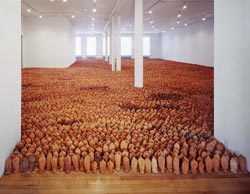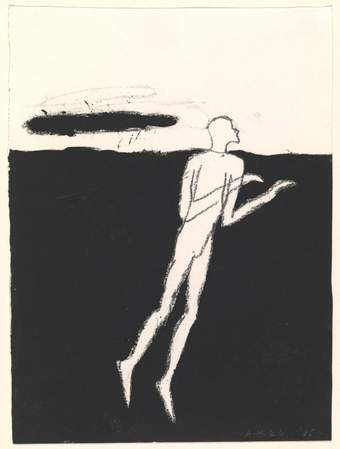British sculptor Antony Gormley uses the human form to explore man's existence in and relation to the world.
Field is a series of installations made in collaboration with communities from across the globe. This Field is the American version, made in 1990 with the Texca family of brick-makers in San Matias, Cholula, Mexico. Thirty-five thousand figures were made by about sixty men, women and children aged from six to over sixty, mostly members of the extended family.
Participants were asked to follow only a few instructions: the pieces were to be hand-sized and easy to hold, eyes were to be deep and closed and the head was to be in proportion with the body. Figures range in size from 8–26 centimetres tall, and were dried in the sun and then baked in a brick kiln. The twenty-five tonnes of clay used in making the figures came from the valley floor a few miles to the south-west of San Matias.
Field acts as an 'invasion' or 'infection', and the sensation is that of a tide; an endless mass that has become temporarily limited by the architecture of the place where it is installed, but could easily extend further than we can see. When we look at the figures in Field, they return our gaze, which has the effect of making us, and not them, the subject of the work.
In 1994 Antony Gormley was awarded the Turner Prize for Field, and is perhaps best-known for his large outdoor sculpture Angel of the North.
Tate Liverpool is the first location to show more than one Field. In 1993, Tate Liverpool showed Field for the British Isles made with people in St Helens, Merseyside and Ibstock, a local brick making company.
Antony Gormley: Field complements A Secret History of Clay: From Gauguin to Gormley 28 May – 30 August in the fourth floor galleries. This exhibition looks at the use of clay as a material for the avant-garde from the beginning of the twentieth century to the present day.



